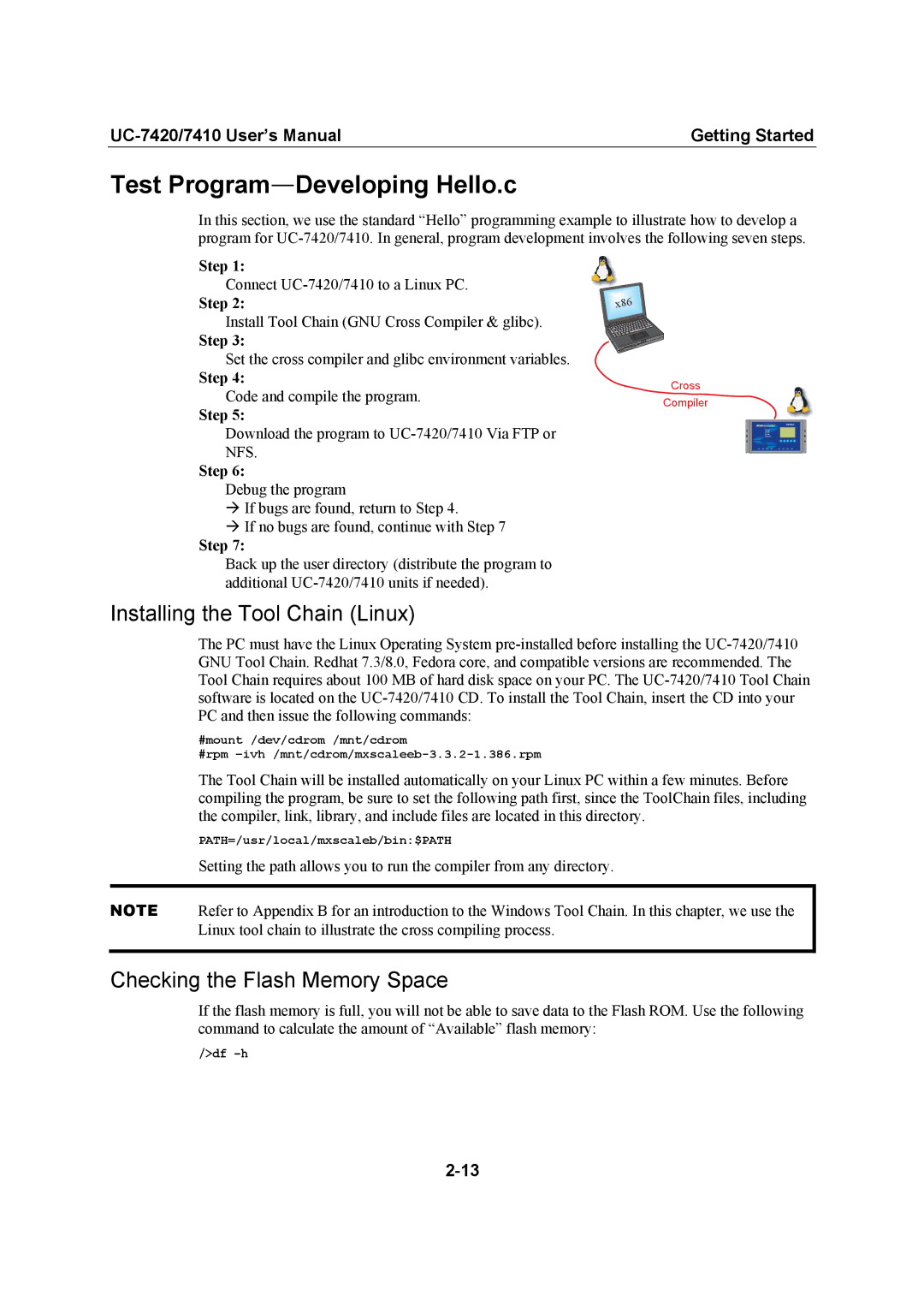
Getting Started |
Test Program—Developing Hello.c
In this section, we use the standard “Hello” programming example to illustrate how to develop a program for
Step 1:
Connect
Step 2: | x |
| |
Install Tool Chain (GNU Cross Compiler & glibc). |
|
Step 3: |
|
Set the cross compiler and glibc environment variables. |
|
Step 4: |
|
Code and compile the program. |
|
Step 5: |
|
Download the program to |
|
NFS. |
|
Step 6: |
|
Debug the program |
|
ÆIf bugs are found, return to Step 4.
ÆIf no bugs are found, continue with Step 7
Step 7:
Back up the user directory (distribute the program to additional
Cross
Compiler
Installing the Tool Chain (Linux)
The PC must have the Linux Operating System
#mount /dev/cdrom /mnt/cdrom
#rpm
The Tool Chain will be installed automatically on your Linux PC within a few minutes. Before compiling the program, be sure to set the following path first, since the ToolChain files, including the compiler, link, library, and include files are located in this directory.
PATH=/usr/local/mxscaleb/bin:$PATH
Setting the path allows you to run the compiler from any directory.
NOTE Refer to Appendix B for an introduction to the Windows Tool Chain. In this chapter, we use the Linux tool chain to illustrate the cross compiling process.
Checking the Flash Memory Space
If the flash memory is full, you will not be able to save data to the Flash ROM. Use the following command to calculate the amount of “Available” flash memory:
/>df
